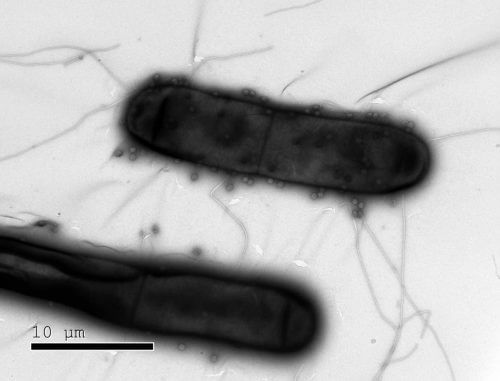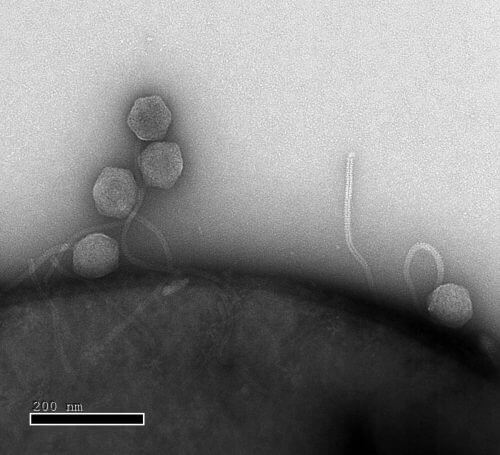Researchers from the Weizmann Institute have developed sophisticated methods of computer analysis to identify the new mechanisms

Until about a decade ago, scientists were not aware that bacteria are equipped with sophisticated immune systems that have the power to protect them from viruses that attack them. All this changed, of course, after the discovery of today's best-known bacterial defense mechanism - CRISPR. The realization that CRISPR could be used by researchers for gene editing revolutionized thousands of laboratories around the world. Today it is understood that most microorganisms have sophisticated immune systems in which CRISPR is only one component, but an effective way to identify these systems has not yet been found. In a large-scale systematic study, the Weizmann Institute scientists revealed for the first time ten additional defense mechanisms in bacteria. "The systems we discovered are unlike anything else we've known so far," says Prof. Rotem whistles from the Department of Molecular Genetics. "In our opinion, one or two of them may expand the 'toolbox' for genetic editing, and others may indicate the origin of the immune system in humans." The results of the current study were published today in the scientific journal Science.
In their war against viruses, bacteria cannot rely on CRISPR alone, since many viruses have "anti-CRISPR" proteins that cancel its activity. Prof. Sorek and members of his research group began to look for other defense mechanisms using a computer program they wrote, which scans all the bacterial genomes whose sequences are known - about 50,000 genomes in total. Instead of searching for sequences according to predefined characteristics, the algorithm locates "statistical signatures" of genes involved in defense - for example, identifying "defense islands", regions of the genome that contain several defense-related genes in close proximity. Then, since the genes of the immune system usually do not work alone - not even in bacteria - the researchers developed sophisticated methods of computer analysis to understand which genes join forces and work together to create a defense mechanism.
After narrowing down the possibilities from millions of genes to a few hundred, the researchers had to examine the possible mechanisms they identified. Instead of trying to isolate the genetic sequences from hundreds of different bacteria, the research team turned to synthetic biology: making genes to order. They sent the genetic code sequences - in total, about 400,000 bases, or genetic code "letters" - to a commercial laboratory, where dozens of multi-gene systems were synthesized for testing. These synthetic systems were later introduced into laboratory bacteria whose natural immune systems had been silenced. The bacteria were exposed to viruses and other infectious agents to test if the synthetic defense system actually works. Ten of the systems tested gave the bacteria a strong defense against infection, and this is how the researchers could tell that these were new defense systems.
"The systems we discovered are unlike anything else we've known so far. In our opinion, one or two of them may expand the 'toolbox' for genetic editing, and others may indicate the origin of the immune system in humans."

Prof. Sorek says that the research, in its various stages, which included computer analysis and laboratory experiments, required the concentrated effort of six researchers over two years. It was led by Dr. Shani Doron and Sarah Melamed, with the intensive involvement of Gal Ofir, Dr. Azita Levitt, Dr. Anna Loptina, and Dr. Gil Amitai. Once every two weeks, the team members are assigned to the "Defense Council" meetings to discuss the various research directions and the defense mechanisms that have been revealed.
"Our findings suggest that some important areas of our basic immune system have ancient evolutionary roots in immune mechanisms in bacteria, which protect them against viruses"
The researchers still do not know how the discovered immune mechanisms work, and according to Sorek, some of them have "surprising activity that we are just beginning to recognize." In one of the mechanisms there are genes that are identified with the Toll-Interleukin (TIR) type receptor. The involvement of TIR regions in the immune system was already known in the past, but not in bacteria. Such regions are an integral part of the innate immune system in humans, and even in plants, but have never been known to be part of the bacterial defense system against viruses. "Our findings suggest that some of the important areas of our basic immune system have ancient evolutionary roots in immune mechanisms in bacteria, which protect them against viruses," says Prof. Sorek.
As for other genes, it seems that they are "borrowed" from bacterial systems that are not related to defense; For example, the rods used by bacteria for swimming. Genes that allow these protons to absorb protons - and thus provide them with energy - serve as one of the defense systems discovered. Another system, known as condensin, protects DNA during cell division, and the researchers discovered a defense system that uses components of the condensin mechanism to protect bacteria from invading plasmids - tiny rings of DNA that can be inserted into bacterial cells. "The fact that we were able to find ten bacterial defense systems suggests that there are many more," says Prof. Sorek. "My lab continues to search for new mechanisms. In addition, we started focusing on some of the most promising ones in order to understand in depth how they work."
See more on the subject on the science website:

One response
: )